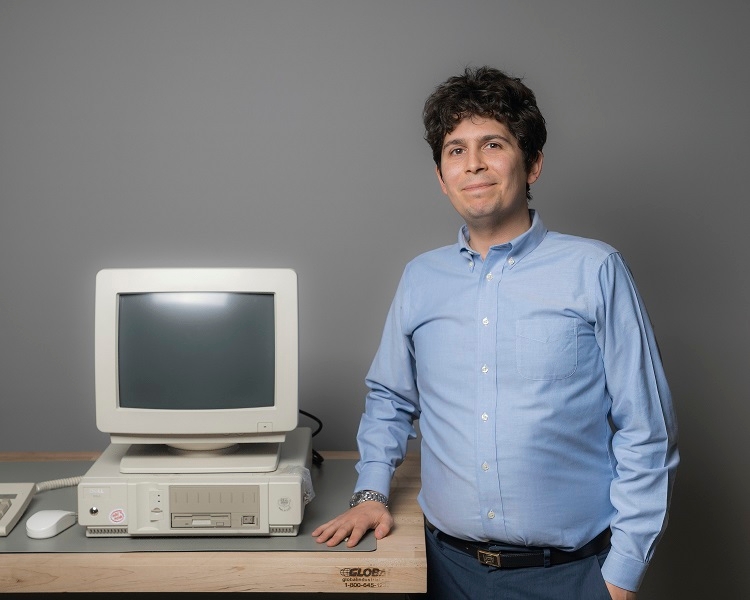Jonathan Farbowitz, a 2016 graduate of the Moving Image Archiving and Preservation (MIAP) program in the Department of Cinema Studies at NYU's Tisch School of the Arts, has joined the Conservation Department at the Solomon R. Guggenheim Museum for a two-year, full-time fellowship in the conservation of computer-based art. The fellowship, which began in December 2016, focuses on the study, documentation, and preservation of 22 software-based artworks in the Guggenheim's collection.
Computer-based art presents unique, complex, and time-sensitive preservation challenges. As Farbowitz explains, these include "extracting data from obsolete storage media, analyzing the dependencies and future risks of the artworks, and creating proper documentation so that the works can be exhibited or loaned in the future."
Farbowitz encountered many of these issues as a student at NYU, through MIAP coursework, internships, and thesis research on the preservation of malware, which led to a published article in The Conversation ("Why save a computer virus?"). "Tackling the daily demands of my fellowship would not be possible without MIAP's strong emphasis (both conceptual and practical) on digital preservation," says Farbowitz. "The preservation challenges of complex media artworks, including installation art and software-based art, served as a thread throughout the entire curriculum."
The Guggenheim's Fellowship in the Conservation of Computer-Based Art is made possible by a grant from the Thoma Foundation, the New York State Council on the Arts, Christie’s, and support from individual donors. More information about the museum's initiative to conserve computer-based art, and its ongoing research collaboration with NYU's Department of Computer Science, can be found on the institution's Checklist Blog ("How the Guggenheim and NYU Are Conserving Computer-Based Art," Part 1 and Part 2).
